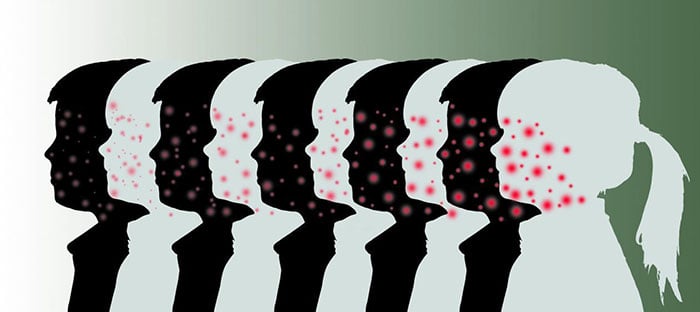
"A new study published by the American Academy of Pediatrics has found that vaccine refusal by parents is on the rise. Pediatricians who had encountered at least one child patient with parents against vaccinations grew from 74.5 percent to 87 percent between 2006 and 2013 (1)." So why are parents asking so many questions? Anti-vaccination websites, Facebook pages, and the like are popping up all over the Internet instilling fear into first time parents.
Data shows that today’s generation is much more likely to believe user generated stories and content compared to government organizations (like the CDC), however, statistics show that serious injuries occur to fewer than 1 in a million children, or even 1 in 10 million or 100 million, depending on the vaccine and the side effect (1).
Clinicians must be prepared to answer difficult questions from concerned parents when it comes to their child’s vaccinations. Below are some commonly asked questions, found circulating on Facebook, from skeptical parents. In this two part series, we will address the top six questions parents are asking their providers when it comes to vaccination.
“The likelihood of my child getting a vaccine preventable disease is very low. Why do they need to get vaccines if there is only a small chance they get any of the diseases?”
Statistically, the change of a child getting one of the vaccine preventable diseases is very low. Vaccinations are to thank for that. The numbers of reported cases of these diseases were dramatically reduced after mainstream use of the various vaccines across the country. As immunization coverage rises, cases fall. If we stop vaccinating we could find ourselves battling epidemics and outbreaks from diseases we thought were nonexistent decades ago.
“Why does my child need so many doses of so many vaccines?”
There are two different types of vaccines. Some are inactivated (killed) while others are live. Inactivated vaccines contain a fixed amount of disease antigen (virus or bacteria), and immunity is achieved in phases, with each dose strengthening immunity. On the other hand, live vaccines contain a small amount of antigen which reproduces and spreads throughout the body to create immunity. Live vaccines often lead to satisfactory immunity after the first dose, however, a second dose is recommended because not everyone responds to the first one.
“Vaccines contain toxic ingredients. I don’t want to inject these into my child!”
This is a huge misunderstanding. Although some ingredients in vaccines could be toxic in MUCH higher doses, any substance can be toxic to the human body, even water! Vaccines contain extremely small traces of these substances and each substance is there for a reason.
Mercury: Babies are exposed to mercury in milk, including breast milk and seafood also contains mercury.
Formaldehyde: Formaldehyde is in automobile exhaust; in household products and furnishings such as carpets, upholstery, cosmetics, paint, and felt-tip markers; and in health products such as antihistamines, cough drops, and mouthwash. Formaldehyde is used in many manufacturing processes and is removed leaving only a tiny, tiny trace behind in most products.
Aluminum: The average person takes in an estimated 30 to 50 mg of aluminum every day, mainly from foods, drinking water, and medicines. Not all vaccines contain aluminum, but those that do typically contain about .125 mg to .625 mg per dose, or roughly 1% of that daily average. Aluminum actually makes the vaccine more effective (1).
It is likely the clinicians will face more and more parents who are refusing to vaccinate their children. For additional commonly asked questions around vaccination, stay tuned for A Clinician's Guide to the Anti-Vax Parent's Most Burning Questions (Part 2).
(1) Ridley, Jane. "I Was an Anti-vax Crackpot — until This Happened." New York Post. N.p., 20 Sept. 2016. Web. 21 Sept. 2016.
(2) Centers for Disease Control (CDC), World Health Organization (WHO)
Image Credit: Damon Linker. "Anti-vaxxers and the Death of Civic Duty." Anti-vaxxers and the Death of Civic Duty. N.p., 06 Feb. 2015. Web. 21 Sept. 2016.



